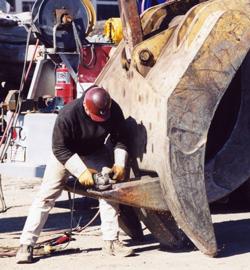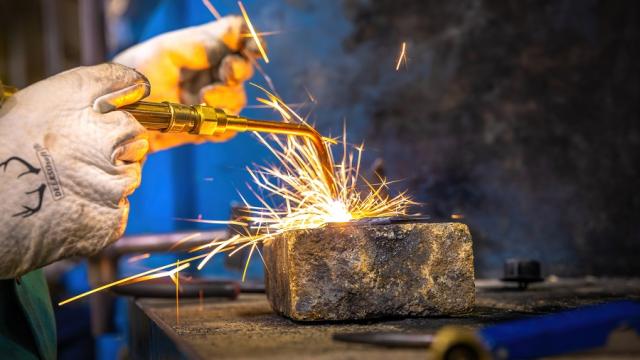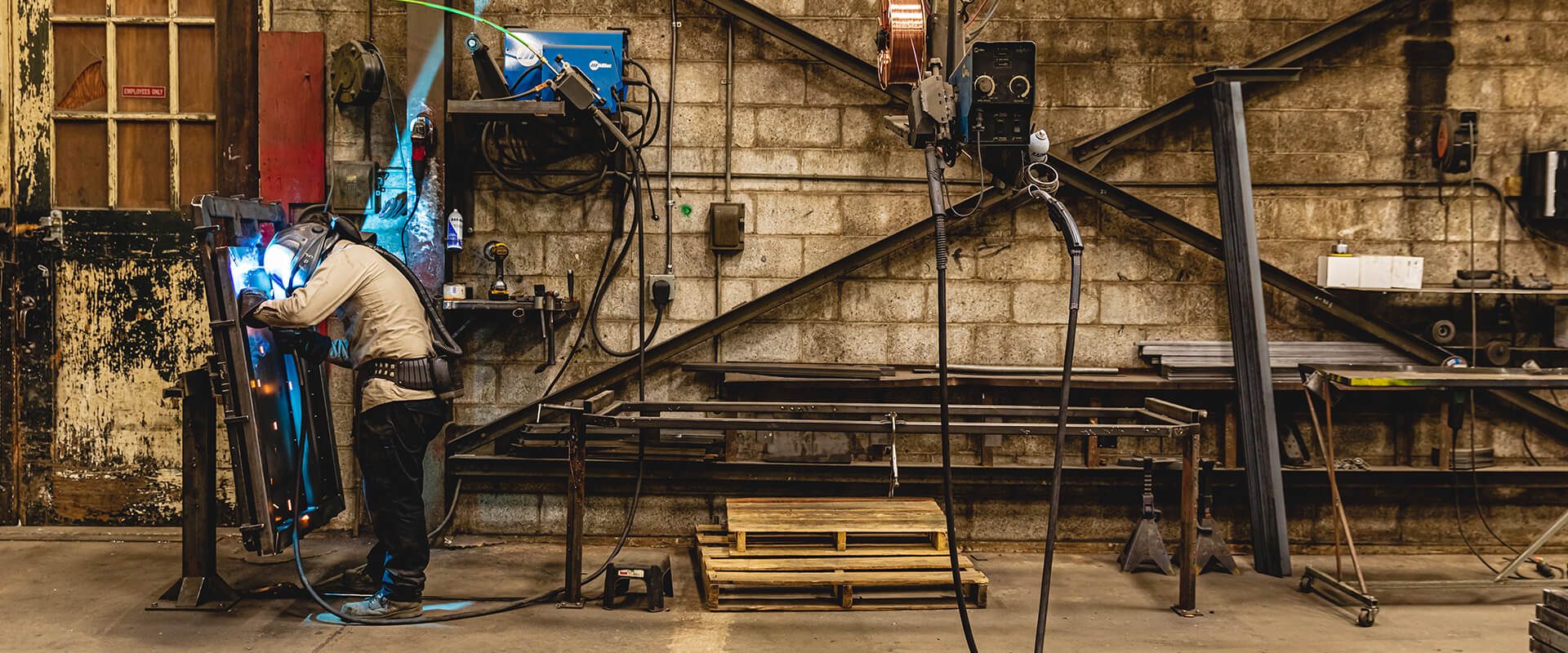Common Welding Repair Issues and How to Address Them Efficiently
Welding fixings typically come across an array of concerns that can jeopardize the stability of the final item. Common troubles consist of poor infiltration, porosity, and misalignment, to name a few. Each issue provides unique obstacles that call for details methods for resolution. Recognizing these concerns is important for welders intending to enhance their end results and abilities. This conversation will certainly discover these common welding repair work problems and reliable techniques to address them.
Insufficient Penetration
Inadequate infiltration occurs when the weld steel falls short to fully fuse with the base product, causing weak joints and possible structural failures. This concern typically comes from not enough warmth input, inaccurate electrode angle, or incorrect welding speed. Welders might experience inadequate infiltration as a result of a mistake of the necessary parameters for a details product thickness or type. Furthermore, contamination on the base material's surface area can prevent efficient bonding, exacerbating the trouble. To attend to insufficient infiltration, welders should assure proper setups on their devices and keep a clean job surface. Routine examination of welds is advised to identify any shortages early, allowing for prompt corrections and the prevention of compromised structural honesty in bonded settings up.
Porosity
Porosity is an usual flaw in welded joints that manifests as little gas bubbles entraped within the weld steel. This defect can jeopardize the stability of the weld, causing reduced stamina and potential failure under stress and anxiety. Montana Mobile Welding and Repair Welding. Porosity typically occurs from contamination, dampness, or inappropriate welding strategies, which allow gases to escape into the liquified weld swimming pool. To attend to porosity, welders ought to ensure correct surface prep work, maintain a clean workplace, and make use of suitable welding parameters. Additionally, selecting the appropriate filler product and shielding gas can alleviate gas entrapment. Regular examination and testing of welds can aid identify porosity early, guaranteeing prompt rehabilitative actions are taken, therefore maintaining the high quality and integrity of the bonded framework
Misalignment
Misalignment in welding can arise from numerous aspects, including improper configuration and thermal growth. Comprehending the origin triggers is crucial for effective resolution. Numerous adjustment techniques are offered to straighten components and assure structural stability.
Root causes of Imbalance
Welding misalignment commonly comes from a variety of underlying issues that can jeopardize architectural integrity. One key reason is incorrect fit-up of components before welding, which can lead to spaces and irregular surface areas. Variations in thermal development during the welding process can additionally result in distortion, particularly if the materials being joined have various coefficients of growth. In addition, poor fixturing and securing may fall short to hold elements firmly in location, causing movement throughout welding. Poorly kept tools, including welding makers and tools, might introduce incongruities in the weld grain, more contributing to misalignment. Driver error, stemming from not enough training or experience, can additionally play a substantial duty in producing misaligned welds.

Adjustment Strategies Offered
Addressing imbalance effectively calls for a combination of rehabilitative methods customized to the specific problems available. One usual approach is using jigs or components to hold components in the proper position during welding, guaranteeing constant positioning. In addition, preheating the materials can help in reducing distortion and boost fit-up. For significant misalignment, mechanical realignment techniques, such as utilizing hydraulic jacks or clamps, can be utilized to deal with the position before welding. Post-weld warm treatment may likewise be required to alleviate tensions triggered by misalignment. Finally, cautious evaluation and adjustment during the setup stage can protect against imbalance concerns from coming to be significant issues, promoting a smoother welding procedure and improving general architectural integrity.
Distortion
Distortion is an usual obstacle in welding that can arise from different aspects, including uneven home heating and cooling. Understanding the sources of distortion is necessary for applying reliable avoidance methods. Resolving this problem not only improves architectural stability but also boosts the total top quality of the weld.
Root causes of Distortion
When subjected to the intense heat of welding, materials commonly undertake adjustments that can result in distortion. This phenomenon mostly occurs from thermal growth and contraction during the welding process. As the weld location warms up, the material increases; upon cooling, it contracts, which can produce interior stress and anxieties. Additionally, irregular heating throughout a workpiece can intensify these anxieties, causing bending or flexing. The type of product additionally plays a substantial duty; metals with differing thermal conductivity and coefficients of development may react in different ways, resulting in unpredictable distortions. Inadequate joint style and poor fixturing can add to imbalance throughout welding, increasing the possibility of distortion. Comprehending these reasons is essential for reliable welding fixing and avoidance strategies.
Prevention Techniques
Efficient prevention strategies for distortion throughout welding concentrate on managing warmth input and making certain correct joint style. Preserving a regular warmth input aids to lessen thermal development and tightening, which can result in distortion. Using techniques such as pre-heating the work surface can also reduce the temperature level gradient, advertising consistent heating. Additionally, choosing proper joint styles, such as T-joints or lap joints, can boost stability and lower stress and anxiety concentrations. Applying proper fixturing to protect the workpieces in location additionally help in keeping placement during the welding process. Ultimately, staggered welding series can disperse warmth more equally, avoiding local distortion. By applying these strategies, welders can considerably reduce the probability of distortion and boost the total high quality of their welds.
Splitting
Splitting is a common concern run into in welding fixings, usually arising from numerous variables such as improper air conditioning prices, material choice, or poor joint prep work. The incident of cracks can significantly jeopardize the honesty of the weld, bring about potential failures throughout procedure. To address this issue, welders must first examine the source, making certain that products work and suitably picked for the certain application. Additionally, controlling the cooling price during the welding process is important; fast cooling can generate anxiety and lead to cracking. Proper joint design and preparation likewise contribute to lessening the threat. Executing these methods can improve weld high quality and toughness, inevitably reducing the chance of cracking in ended up weldments.

Insufficient Combination
A substantial problem in welding repair services is insufficient combination, which occurs when the weld steel does not properly bond with the base product or previous weld passes - Montana Mobile Welding and Repair. This defect can result in weaknesses in the joint, potentially jeopardizing the honesty of the welded framework. Factors adding to incomplete combination include inadequate warmth input, inappropriate welding strategy, and contamination of the surface areas being signed up with. To resolve this issue properly, welders need to ensure appropriate pre-weld cleaning and surface prep work, in addition to adjust their welding parameters to accomplish adequate infiltration and fusion. Routine inspection during the welding procedure can likewise assist recognize incomplete combination early, permitting prompt corrective measures to improve the overall quality of the weld
Overheating
While welding repair services can boost architectural stability, overheating provides a significant obstacle that can result in product destruction. Too much heat throughout welding can alter the mechanical buildings of steels, leading to minimized stamina, increased brittleness, and warping. This phenomenon is especially important in high-stress applications where structural integrity is vital. Recognizing overheating can include aesthetic assessments for discoloration or distortion, in addition to monitoring temperature level during the welding procedure. To alleviate the risks related to overheating, welders should use proper techniques, such as regulating warmth input, readjusting travel speed, and making use of ideal filler materials. Furthermore, executing pre- and post-weld warm treatments can assist recover product residential or commercial properties and improve the overall high quality of the repair service, guaranteeing lasting performance and security.
Frequently Asked Inquiries
What Are the Typical Indications of a Welding Issue?

Exactly How Can I Check My Welds for High quality?
To examine welds for quality, one can use aesthetic evaluations, ultrasonic testing, and radiographic approaches. Each strategy assures architectural stability, recognizes issues, and verifies adherence to defined standards, ultimately boosting the integrity of the bonded joints.
What Security Safety Measures Should I Take While Welding?
When welding, one ought to prioritize safety and security by putting on appropriate individual safety devices, guaranteeing appropriate ventilation, protecting flammable products away, keeping a clean office, and being conscious of environments to prevent injuries and mishaps.
Can I Repair a Weld Without Redoing the Entire Joint?
Repairing a weld without redesigning the whole joint is possible, relying on the damages (Montana Mobile Welding and Repair Belgrade Welding). Strategies such as grinding, including filler product, or utilizing a welding procedure can efficiently address certain flaws while preserving the bordering structure
What Devices Are Necessary for Reliable Welding Repairs?
Necessary devices for effective welding repair work include a welding equipment, cable brush, mill, safety equipment, clamps, and filler materials. Each tool plays a vital function in making sure quality and safety during the fixing process. Porosity usually develops from contamination, wetness, or incorrect welding strategies, which permit gases to run away into the molten weld swimming pool. Badly maintained devices, including welding devices and devices, may introduce incongruities in the weld grain, further adding to imbalance. When subjected to the extreme warmth of welding, products usually undertake adjustments that can lead to distortion. Splitting is a common concern come across in welding repair work, often resulting from numerous elements such as incorrect air conditioning rates, product selection, or poor joint preparation. A significant problem in welding repairs is insufficient fusion, which takes click here place when the weld metal does not adequately bond with the base material or previous weld passes.